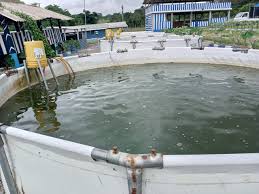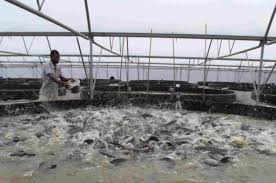The non-traditional system of fisheries management involves the control of fisheries by the state or its agents, as opposed to management by traditional authorities.
This article explores the modern systems of fisheries management, similarities between traditional and modern methods, the mixed system of management, and the challenges associated with enforcing laws. Interestingly, both traditional and modern government-managed systems share similar objectives, despite the differences in their approaches.
Modern System of Fisheries Management in Nigeria
The modern system of fisheries management is operated by agents of the federal government, where fisheries regulations are enforced by officers of the Fisheries Departments (Neiland et al., 1994a; Ovie & Raji, 2006).
This system exists alongside common property and traditional management systems. The authority and control over fisheries resources lie with the state, local, and federal governments. The primary objective of modern fisheries management is the sustainable exploitation of resources or revenue generation.
In Nigeria, the federal government holds control over natural resources, including fisheries, while state and local governments are mandated to enforce licensing, catch and gear regulations, the designation of fish sanctuaries, closed seasons, and other management measures. Despite this, traditional authorities still retain some level of power over fisheries resources within this framework.
Read Also: Popular Breeds of Ruminant Animals
Similarities between Traditional and Modern Methods of Fisheries Management

Both traditional and modern fisheries management systems share similar objectives, particularly concerning sustainable resource use and conservation. The goal of both systems is to ensure the optimal use of resources while also addressing the need for resource sharing. These objectives reflect common economic and social postulates between the two systems, emphasizing the importance of sustainability in fisheries management.
Mixed System of Fisheries Management in Nigeria
The mixed system of fisheries management is characterized by cooperation between traditional government leaders (village and district heads) and local government authorities. Together, they collaborate in controlling and licensing fishing areas.
This system ensures that fishing sites are allocated without serious conflicts and that revenue is appropriately distributed between the traditional and local governments. The mixed system provides a good example of how local-level fisheries management arrangements can adapt to accommodate new fishing systems through cooperation between traditional and modern governments.
Read Also: The Ratio of a Male to Female Ruminants
Problems of Law Enforcement in Fisheries Management

There are several challenges associated with enforcing fisheries laws and regulations in Nigeria:
1. Lack of logistics: Governments often lack the necessary resources, such as personnel, funds, and field vehicles, to enforce fisheries laws effectively.
2. Weak political commitment: A lack of strong political commitment hampers the effective coordination of activities between organizations involved in fisheries management, such as the Federal Department of Fisheries and the Nigerian Institute for Oceanography and Marine Research (NIOMR) (Amiengheme, 1993).
3. Low licensing fees: The primary objective of licensing vessels has been to generate revenue, while the control of fishing effort has been secondary and ineffective (Tobor, 1991).
4. Misinterpretation of regulations Stakeholders often misinterpret decrees and other regulations, which can lead to ineffective implementation.
5. Weak scientific data Inadequate scientific data leads to incomplete information and knowledge, resulting in the formulation of misguided policies.
6. Absence of stakeholder input: Most decisions regarding fisheries management are made using a top-bottom approach, without adequate input from stakeholders (Neiland et al., 2002; Nwosu et al., 2011).
7. Limited adoption of co-management systems: Fisheries co-management, introduced on Kainji Lake through technical assistance from the German Ministry of Economic Cooperation and Development (GTZ) between 1993 and 2001, has not become widely practiced.
The non-traditional system of fisheries management in Nigeria often employs a top-down approach, where the government and its agencies play the primary roles in decision-making and management.
While traditional and non-traditional fisheries management systems may differ in their methods, both aim to achieve similar objectives, such as resource conservation and sustainable exploitation.
The challenges in enforcing fisheries laws, however, highlight the need for better coordination, stakeholder involvement, and improved resources for enforcement.
Do you have any questions, suggestions, or contributions? If so, please feel free to use the comment box below to share your thoughts. We also encourage you to kindly share this information with others who might benefit from it. Since we can’t reach everyone at once, we truly appreciate your help in spreading the word. Thank you so much for your support and for sharing!
Read Also: Essential Teaching Courses for Professional Growth

